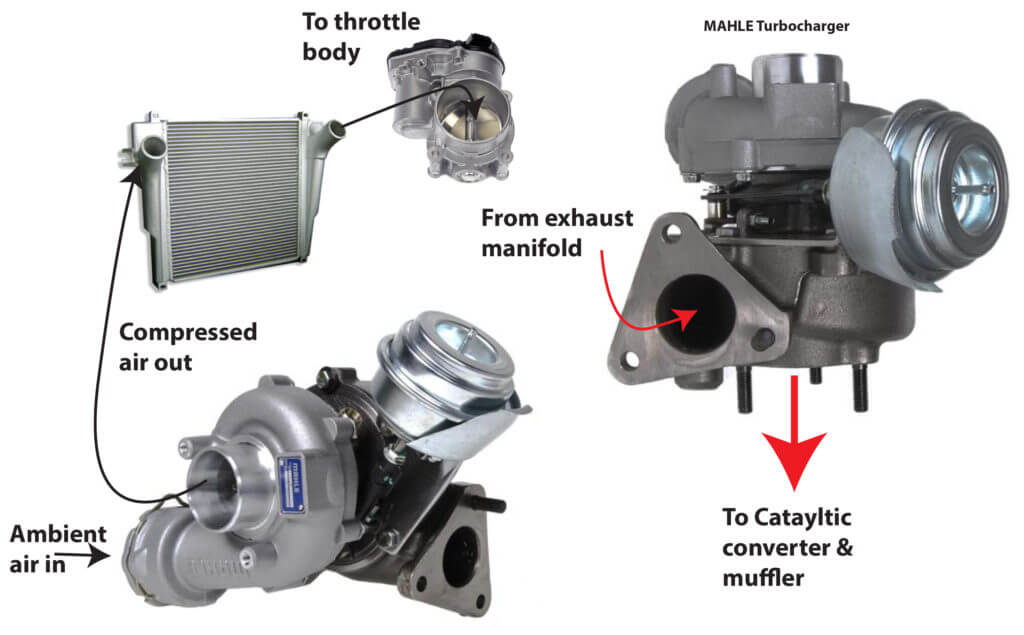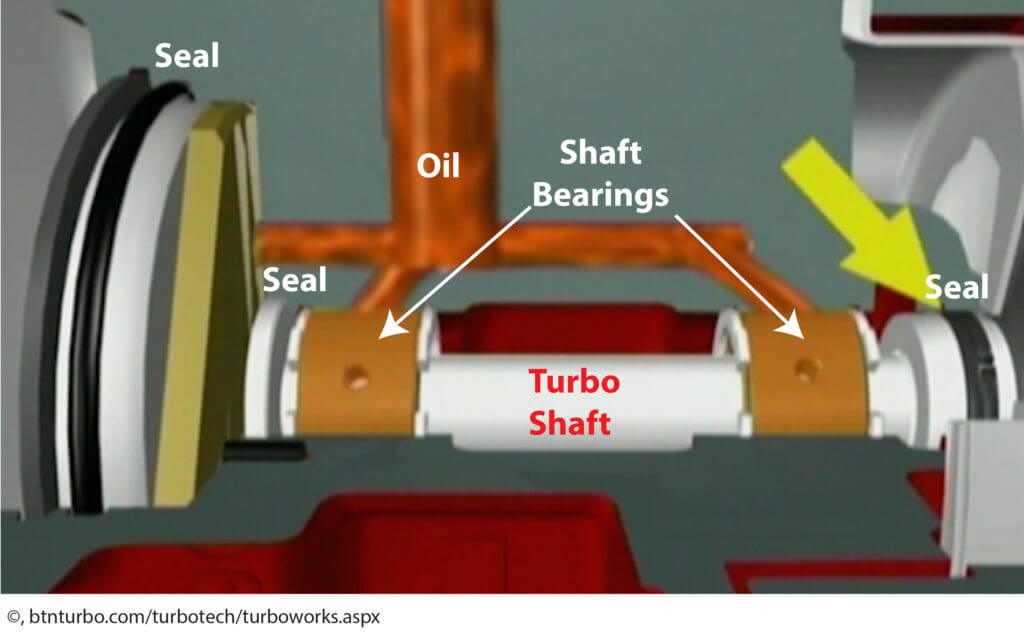Turbocharger maintenance
Turbocharger maintenance
Many late model cars and trucks are equipped with at least one turbocharger. Turbochargers improve performance in an engine but they operate under extreme conditions so you must pay attention to turbocharger maintenance. Here are some turbo maintenance tips to extend turbocharger life.
Oil changes is a critical turbocharger maintenance
Turbochargers spin at speeds up to 300,000 RPM and incoming exhaust gas temperatures can often reach temps up to 1,740°F. So the turbo needs a continuous supply of oil and coolant to prevent heat and friction damage to the bearings.
Oil changes are critical to maintaining proper turbocharger bearings. Many oil companies are recommending extended oil drain intervals that greatly exceed the car maker’s recommendations. If you want to burn up your turbo, blindly follow those extended oil change intervals. Think about it; the oil manufacturers’ extended drain intervals don’t take into account the type of engine in your particular vehicle nor do they take your driving habits into account. So how can they possibly list an oil change interval that exceeds the carmakers recommendations? They can’t.

Turbocharger airflow pattern
Turbo maintenance means more oil changes
You see all kinds of claims for extended oil change intervals: change once a year, change every 15,000 miles, change every 25,000 miles. Boloney! Follow the car maker’s recommended oil change intervals and make sure you use the interval for your type of driving. In most cases that means you should be following the SEVERE service category with more frequent oil changes.

Keep in mind that high heat is the #1 cause of oil oxidation and breakdown. Why risk at $2,000 repair because you tried to squeeze more miles out of an oil change.
Also, synthetic oil is always the better choice even if the carmaker didn’t recommend it when your car was built. It’s a much better oil and resists oxidation much better than conventional oil.
Let the turbocharger cool after hard driving
Turbochargers spin the fastest during high RPMs and heavy acceleration. If you come off the highway and shut off the engine right away, the turbocharger will cook the oil left inside. Instead, let the engine idle for about 15-seconds after heavy acceleration or high-speed operation. The turbocharger barely spins or doesn’t spin at all at idle speed, yet the engine still circulates oil and coolant through the turbo. That’ll cool down the bearings and extend the life of the turbocharger.
Use light acceleration when cold to extend the life of the turbocharger
Cold oil builds pressure rapidly but proper flow takes a while. So ease up on the pedal after starting a cold engine. Drive at least a few blocks with a light foot before hammering the accelerator.
Turbo maintenance requires more frequent air filter checks and changes
Your turbocharger is nothing more than an air pump and it needs a clean filter to do its job. A partially clogged air filter reduces boost and that reduces turbocharger performance.
Changing coolant on schedule is part of turbo maintenance
The anticorrosive additives in coolant have a limited life. Once they wear out, corrosion sets in and that reduce cooling capacity. As you’ve already learned, excessive heat buildup dramatically reduces the life of your turbo. So stay on top of coolant changes and always use the recommended coolant type.
Maintain cooling system to keep the turbocharger cool
A failed radiator fan, worn water pump, or clogged radiator fins reduce engine cooling. Carmakers run engine coolant through the turbo to keep it cool. If your engine is overheating, so is your turbo. And just a short period of overheating can destroy a turbocharger.
©, 2020 Rick Muscoplat
Posted on by Rick Muscoplat